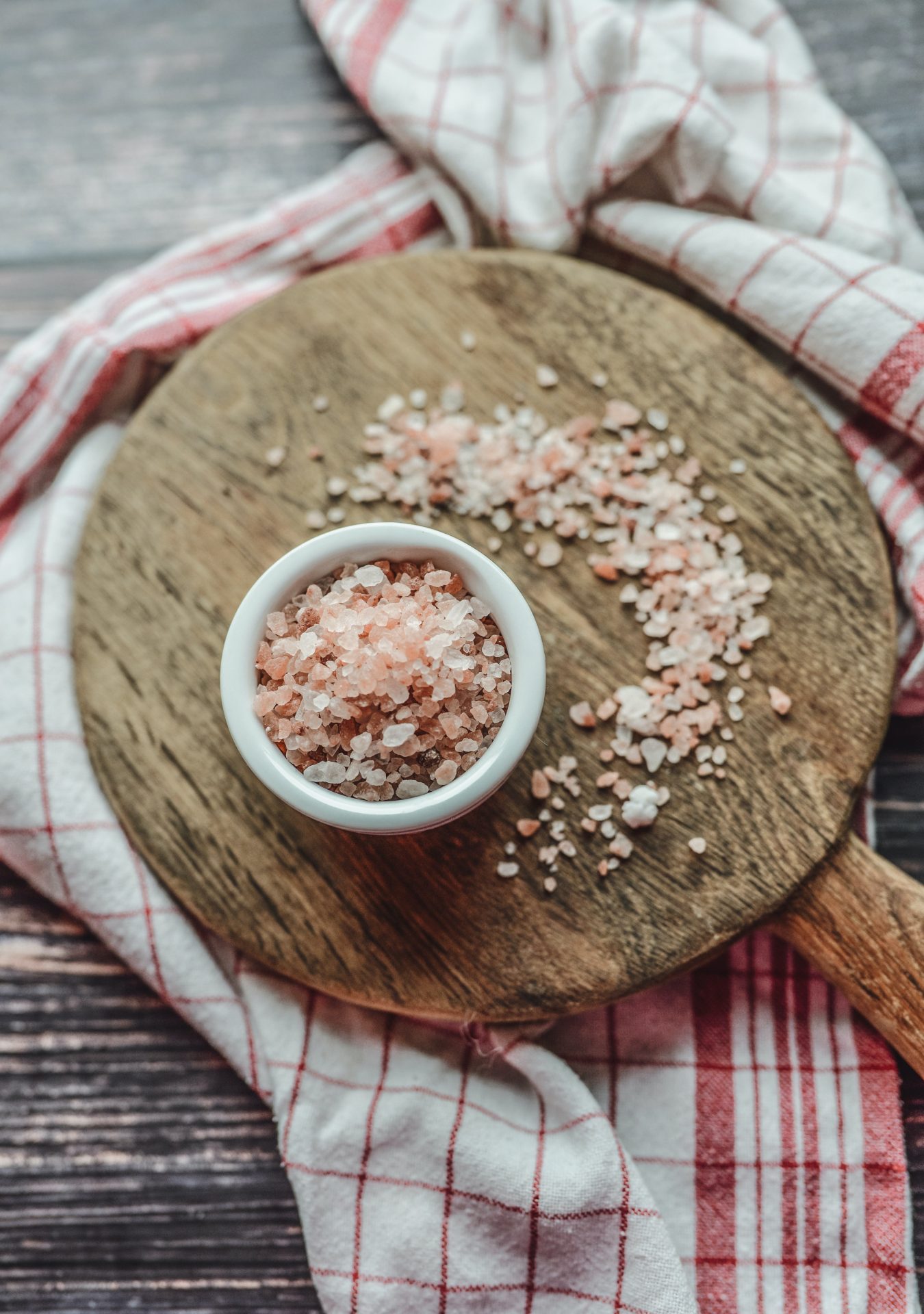One food that I recommend quite a lot for our babies is liver, which was one of both my children’s very first foods – why? Liver is the best source of almost ALL known nutrients – nature’s most powerful superfood!
The University of California’s Berkeley Wellness website states “Ounce for ounce – liver is probably more nutritious than any other food.”
Liver is PACKED with vitamin A, very high in iron (with a powerful combination of folate, iron and B12), B vitamins (especially B12) zinc, copper, brain-building choline, anti-inflammatory omega-3s, rich in antioxidants, serotonin-making tryptophan and so much more! Read more about your baby’s high iron requirements here
Liver is an amazing food to eat if you are low in iron, if you are pregnant, breastfeeding or trying to conceive (as it’s so high in folate, iron, protein and other key nutrients for reproductive health) and for your baby!
However, a question I am asked ALL THE TIME is surrounding the safety of liver consumption and cod liver oil consumption in pregnancy and for babies due to the high Vitamin A content.
I asked the lovely Sheridan Austin, a qualified holistic nutritionist and the creator of the amazing prenatal The Mothers Blend if she could write an evidence based blog post around this controversial topic, as we both agree that liver and cod liver oil are extremely nutritious and incredible foods to include in the mothers pregnancy and postpartum, and then an amazing first food for babies!
You can read Sheridan’s other blog post on prenatal multivitamins and what to look for here
Luka
Adding grated liver into babies puree – recipe from my Milk to Meals book
The scarcity around liver consumption in pregnancy is due to the vitamin A content, which came about when a study was released in 1995 that was based on pregnant women having 3000 ug (10, 000 IU) of synthetic vitamin A and had an incredible amount of flaws. Not only is this study not related to naturally occurring Vitamin A in food, the study itself and its perceived results have been extremely misleading, and studies since this have proved against its theory. Before getting into that, according to Nora Gedgaudas rebuttal against the study – among the 3, 000 women in the study that consumed more than 10, 000 IU Vitamin A, 3% had babies with birth defects. Generally, in this amount of women 3-4% are NORMALLY expected to have birth defects. So the results are showing that the number of birth defects may actually be considered NORMAL outcomes, however this is beside the point. Many studies since then have shown that food vitamin A is in fact beyond critical for the health of the mother and baby, and lowers the risk of birth defects. Whilst I am very picky with synthetic prenatal supplements, you’ll find the majority of them contain vitamin A because we know that it has been proven extremely critical. But why avoid the true, food source which is not only safer, but has the nutrients surrounding it for it to absorb and be utilised by the body far more efficiently? Two studies within the 4 years (1998 and then 1999) after the 1995 study both demonstrated different results where 30, 000 IU vitamin A given to pregnant women showed no association with birth defects, and the other study showed no congenital malformations among 120 infants that were exposed to more than 50, 000 IU of vitamin A per day. You would think this word would have gotten out just as quick as the 1995 study – but no?
Liver not only contains a healthful amount of vitamin A, though also B vitamins, iron, folate and zinc. We know that vitamin A is best paired with food sources of vitamin K2 (also in liver) and vitamin D, which makes a food source like liver extremely beneficial to consume as all nutrients are there in a pleasant package!
Regardless of this, the current guidelines outline that a pregnant woman’s recommended daily intake (RDI) is 800 µg/day with the upper limit being 3000 µg/day. Keep in mind that the RDI means to ideally have a minimum of that amount, so going over this amount has not been shown at all to pose any issues in the general population. 1 single dose of the Mothers Blend delivers 630 µg/day, so not only is it in the safe limits, it is also worthy of considering other vitamin A containing foods that are found beautifully perfect in nature, like eggs and fatty fish! The blend has been evaluated by regulatory advisors, and they of course agree that the blend has nutrients in safe limits for pregnant and breastfeeding women.
So how much cod liver oil is okay if we continue to be concerned of even natural vitamin A retinol in food? If we look at Rosita cod liver oil, 3 softgel capsules contain 378 µg of vitamin A retinol. That means if we combine the Mothers Blend and 3 capsules of cod liver oil, we are having 1,008 µg/day, which is not even close to the perceived upper limit. Fabulous!
If you also like to include liver in your diet other than the Mothers Blend, keep in mind that the vitamin A content varies dramatically in natural food sources. However, despite the lack of reasoning to avoid liver, it may be difficult to exceed the upper limit of vitamin A through your diet though if the product has the vitamin A levels tested, always check it to inform yourself and compare levels with other food sources.
With so much love and hopefully less confusion,
Sheridan Joy xxx
Qualified holistic Nutritionist and certified Gut and Psychology Syndrome (GAPS) practitioner
FAQ:
What is a safe amount of liver per week or what is considered a serving for a pregnant mother or baby?
The requirements for each individual varies greatly depending on their nutrient levels and age. However, even a 50g serving for an adult can be extremely beneficial either once per day or a few times per week. It of course depends on their dietary regimen/how much other meat they eat, whether they are low or high in iron, B12, vitamin A, folate, zinc and so on. For a baby, even a teaspoon can be exceptionally beneficial daily or a few teaspoons per week, however I suggest allowing your baby to be guided by intuition as their needs will vary dramatically daily, weekly and monthly! For example, my little one Malakai will have several teaspoons (or even several tablespoons…) one day, and want none the next. It is his strong intuition shining through of ‘I have had enough for now’.
With regards to vitamin A, the amount of vitamin A varies greatly in animal liver sources, so it isn’t viable to place a solid answer here of how much exactly to have unless we get recent tests of the liver you are sourcing from directly, which is near impossible! This is why I have been able to give exact amounts on The Mothers Blend, because I have the data. However, I want to reiterate a thousand times if I can, that there isn’t enough research at all on the upper limits of food based vitamin A. As you now understand, it is the synthetic vitamin A only that has implied only small impacts hence the upper limit amount, however there is no known studies on adverse reactions of those that consume food based vitamin A say from liver. Therefore, to me (and you make your own decision), I do not focus on numbers and I allow my babies and myself to make their own intuitive decision of how much liver they want to consume. I will offer pate or the liver meat itself and they will decide. Provide them the option, and allow their intuition to guide the way. However, according to recommended daily intakes, when it comes to babies aged 1-3, the upper limit of Vitamin A is 600 ug/day however this is based on very poor evidence and much more needs to be done.
Can you have liver and cod liver oil on the same day?
Absolutely. Again, the lack of evidence showing that food based vitamin A can be toxic is in large amounts is scarce, therefore having over the average recommended amount (and even the upper limit) of vitamin A from food is highly unlikely to be an issue unless the Vitamin A is synthetic and one can show evidence otherwise. Also, unfortunately without the definitive amounts of vitamin A in liver it is almost impossible to determine exact amounts to have, again be guided by you and your babies intuition. Despite the lack of evidence on vitamin A’s upper limit from food, here is some guidance of the RDI, upper limit and more on Vitamin A https://www.nrv.gov.au/nutrients/vitamin-a
What about vitamin A and babies?
The Australian guidelines of health even state themselves that ‘There was a paucity of evidence for children and adolescents, so the UL was determined by extrapolation from adult data on the basis of relative body weight.’
This means that there isn’t enough evidence (if any) that an upper limit is plausible for infants. However, there is endless research demonstrating that a maternal deficiency and/or deficiency in newborn babies and older infants is a huge concern and linked to conditions such as; infections, night blindness, dry skin and eyes, issues with kidney function and structure.
Another example of the risk is in a study where vitamin A deficiency in the second trimester of pregnancy was associated with a threefold increased risk of developing schizophrenia (an associated disorders) in the children.
Basically, there is much more evidence showing that a deficiency of vitamin A is far more common and problematic than there is showing that food based vitamin A from foods like liver and egg yolks is a problem (if there is any quality evidence…).
Here is an exert from Nora’s vitamin A write up of the research around Vitamin A, which I highly recommend if you are still concerned to please go read the article and look into the research she has discussed.
‘Again, the most likely culprits for any production of birth defects in humans or adverse health problems associated with vitamin A are synthetic topical and oral vitamin A analogs, medications and sources of synthetically fortified vitamin A such as that found in processed foods (having other questionable ingredient composition, to-boot), deficiencies/imbalances of other critical fat-soluble nutrients and not actual whole foods such as liver, egg yolks or other natural sources that humans have been consuming far more regularly than today for over hundreds of thousands of years (and longer). The unbridled hysteria concerning these foods in light of every bit of quality research and in light of the whole of human history needs to be rationally reconsidered…and the sooner the better! The consequences of not enough vitamin A seem to overwhelm the prevailing concerns about getting “too much” by substantial orders of magnitude’.







+ show comments
- Hide Comments
add a comment